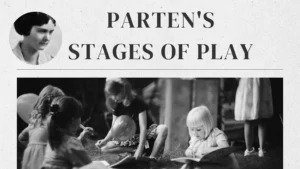Parents and educators often struggle to find the most effective approach to early childhood education. The Reggio Emilia Method, developed in Italy, offers a unique and innovative approach to early childhood education that is gaining worldwide recognition. The Reggio Emilia Method is known for its child-centered approach that emphasizes the role of the child as an active participant in his or her education.
The Reggio Emilia approach emphasizes child-centered learning, encouraging children to explore and discover through hands-on experiences and collaborative projects. It promotes a supportive and enriching environment that fosters creativity, critical thinking, and social skills.
Let’s take a closer look at its principles and practices. This article contains valuable insights into the Reggio Emilia Method and how it shapes the educational experience of young children.
What is the Reggio Emilia Approach?
The Reggio Emilia approach is an innovative educational philosophy that originated in Reggio Emilia, Italy. It is focused on providing a child-centered and holistic learning experience for young children. This approach emphasizes the importance of collaboration, exploration, and creativity in learning. Children are viewed as competent learners who have the right to express themselves through various forms of communication, including art, language, and movement. The Reggio Emilia approach values each child’s unique perspectives and interests, encouraging them to participate actively in their education.
The Origins of the Reggio Emilia Approach
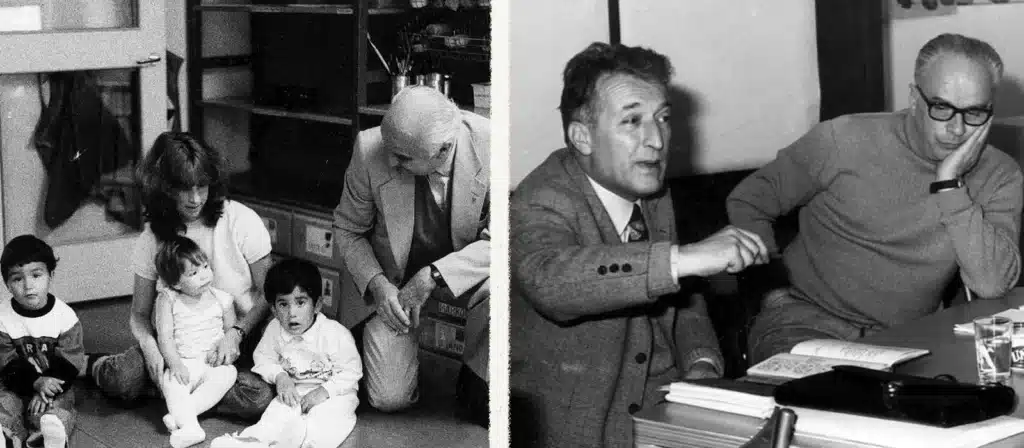
The Reggio Emilia approach to early childhood education originated in Reggio Emilia, Italy, after World War II. It was developed by Loris Malaguzzi and parents in the community who believed that children’s education needed a new direction post-war. They wanted to create an educational system that would prepare children to become active, responsible members of society. Malaguzzi, a teacher and psychologist, played a pivotal role in shaping this progressive educational philosophy.
The community-driven initiative was rooted in the belief that children can construct learning experiences. This philosophy was influenced by the socio-cultural context of post-war Italy, with a strong emphasis on democracy, social justice, and community engagement. The schools in Reggio Emilia became renowned for their innovative practices and profound impact on children’s development.
Reggio Emilia Principles
The Reggio Emilia approach is guided by several key principles that shape its educational philosophy. The approach also emphasizes the importance of relationships between children and adults and among children. By honoring these principles, educators aim to create a learning environment that supports children’s innate curiosity, creativity and love of learning.
- Emergent Curriculum: In the Reggio Emilia approach, the curriculum is not pre-determined but rather emerges based on the children’s interests and needs. Teachers observe the children’s interests and explorations, then design activities and lessons around these interests, ensuring that the educational process is closely tied to the children’s real-life experiences and curiosity.
- Projects: Project-based learning is a significant element of the Reggio Emilia method. Children engage in long-term, in-depth projects, usually centered around a topic of interest. These projects can last days, weeks, or even months and involve various activities and explorations, allowing children to develop a deep understanding of the chosen theme.
- Representational Development: Reggio Emilia emphasizes the development of children through multiple forms of expression. Children use drawing, sculpting, drama, music, and other forms of expression to showcase their understanding and ideas. This diverse range of expression helps children better articulate themselves and enriches their learning experience.
- Collaboration: Collaboration is a key component of the Reggio Emilia approach. Cooperation among children, between children and teachers, and between children and parents is encouraged and supported. Through collaboration, children learn to share and communicate their ideas, work within a group, and benefit from each other’s experiences.
These four elements form the core of the Reggio Emilia educational approach, fostering an environment where children can explore and learn autonomously in a supportive and inspiring setting.
Characteristics of the Reggio Emilia Educational Approach
1. Children as Protagonists
In the Reggio Emilia approach, children are viewed as active participants in their learning process. They are considered strong, capable, and resilient individuals with a natural curiosity and desire to learn.
2. Environment as the Third Teacher
The learning environment is an essential education component, often called the “third teacher.” Classrooms are designed to be aesthetically pleasing and to encourage exploration and interaction. Natural light, plants, and open spaces are common features, creating an inviting and stimulating atmosphere.
3. The Role of Teachers
Teachers in Reggio Emilia schools act as co-learners and collaborators rather than authoritative figures. They facilitate and support the children’s learning journeys, carefully observing and documenting their progress.
4. Documentation and Assessment
Continuous documentation of children’s work and learning processes is a cornerstone of the Reggio Emilia approach. This includes photos, videos, and children’s artwork for reflection and communication with parents. Documentation is a tool for assessing children’s development and understanding their learning paths.
5. Parent Involvement
Parents are considered integral to the educational process in Reggio Emilia schools. Their involvement and collaboration with teachers are encouraged to create a supportive community for the children. Parents’ insights and participation enrich the educational experience, ensuring that learning extends beyond the classroom.
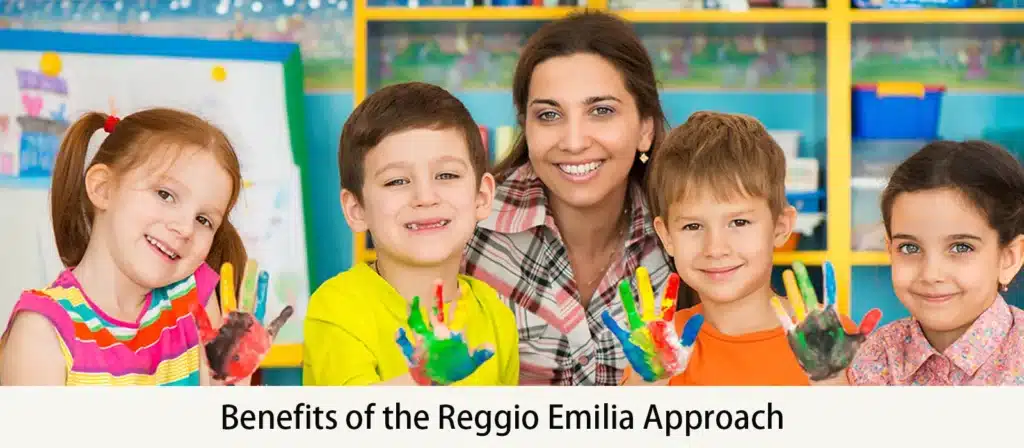
Benefits of the Reggio Emilia Approach
The Reggio Emilia Approach to early childhood education is renowned for its innovative and child-centered philosophy. Here are the key benefits of this approach:
- Enhanced Creativity: The emphasis on creative expression in the Reggio Emilia approach helps children develop their artistic skills and think outside the box. Children are encouraged to explore mediums such as painting, sculpture, and digital art to express their ideas and understanding.
- Critical Thinking: Children in Reggio Emilia schools learn to question, investigate, and solve problems, which enhances their critical thinking abilities.
- Social Skills: Collaborative projects and group activities are central to the Reggio Emilia approach. These experiences foster social interaction and help children develop strong communication and teamwork skills. Children learn to listen to others, share ideas, and work together towards common goals.
- Independence and Confidence: By taking charge of their learning, children become more independent and confident in their abilities. The approach empowers children to make decisions, explore their interests, and take risks in a supportive environment.
- Lifelong Love for Learning: The joy and excitement of discovery instilled by the Reggio Emilia approach create children’s lifelong love for learning. They develop a positive attitude towards education and a passion for exploring new ideas.
- Fostering All-Round Development: The Reggio Emilia Approach places equal importance on all child development areas. By integrating art, music, storytelling, and group projects, children are exposed to various experiences that promote cognitive development, self-expression, and problem-solving abilities.
- Cultivating Resilience and Growth Mindset: A significant benefit of the Reggio Emilia method is its focus on resilience and perseverance. The approach encourages children to experiment, fail, and try again, fostering a growth mindset. By emphasizing process over product, children are not penalized for making mistakes but are instead taught to view challenges as opportunities for learning.
Disadvantages of the Reggio Emilia Approach
The Reggio Emilia approach is highly regarded in early childhood education, but it also has some potential disadvantages or challenges, particularly when considering its implementation in different contexts. Here are a few:
- Overemphasis on Child-Led Learning: The Reggio Emilia Approach strongly emphasizes child-led learning, where children’s interests guide the curriculum. While this can be empowering, it may lead to gaps in foundational knowledge if children do not naturally explore certain critical areas of learning. The lack of a structured curriculum can result in uneven educational experiences among different children.
- Subjectivity in Learning: The approach heavily relies on educators’ subjective interpretation. Since there are no standardized methods or benchmarks, the quality and depth of learning can vary significantly depending on the teacher’s ability to observe, interpret, and respond to children’s needs. This can lead to inconsistencies in the educational experience.
- Potential for Limited Skill Development: While the Reggio Emilia Approach fosters creativity and critical thinking, it may not focus enough on developing specific skills, such as literacy and numeracy, particularly for younger children. This could leave some children underprepared for more formal schooling environments that expect these foundational skills.
- Risk of Neglecting Individual Needs: Although the approach values collaboration and group work, it may inadvertently overlook the individual learning needs of children who require more structure or might not thrive in a highly social, exploratory setting.
- Ambiguity in Learning Outcomes: The open-ended nature of the Reggio Emilia Approach can lead to ambiguity in learning outcomes. Without clear goals or measurable benchmarks, it can be difficult to assess whether children are meeting essential developmental milestones. This ambiguity may also make it challenging for educators and parents to gauge a child’s progress effectively.
Reggio Curriculum
The Reggio Emilia approach to early childhood education is distinguished by its dynamic, flexible curriculum that adapts to each child’s interests and developmental stages. This curriculum is not static but evolves based on the principles of respect, responsibility, and community through a self-guided curriculum.
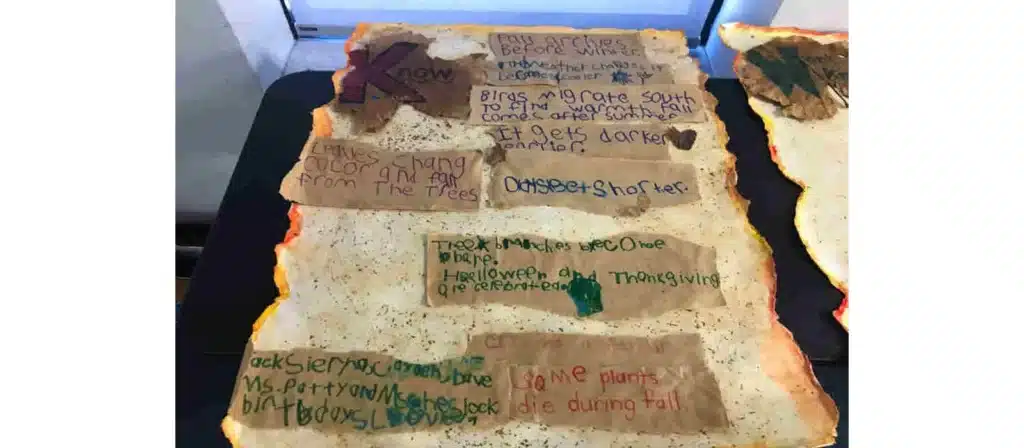
Core Components of the Reggio Curriculum:
- Project-Based Learning: Learning in the Reggio Emilia approach is centered around projects that originate from the interests and curiosities of the children. These projects are in-depth studies of concepts, ideas, and interests that may last for days, weeks, or even months.
- The Environment as a Teacher: The classroom setup plays a crucial role in the Reggio curriculum. Spaces are designed to encourage exploration and interaction with various learning materials. Classrooms are filled with natural light, plants, mirrors, tools, and objects that children can use to express their creativity and engage with their environment.
- Documentation: Educators document the children’s work in various forms—photographs, videos, and audio recordings, as well as the children’s own words and artworks. This documentation serves multiple purposes: it makes learning visible by detailing the children’s exploration and learning process, provides a basis for reflection among children and educators, and informs ongoing curriculum planning.
- Expressive Arts: The Reggio Emilia approach emphasizes the “hundred languages of children,” which refers to how children think, explore, and express themselves through drawing, sculpting, dramatic play, and writing, among others. These activities are integrated into the daily curriculum and are seen as essential tools for cognitive, social, and emotional development.
- Collaboration: Children are encouraged to collaborate in their projects and daily activities. This collaboration extends beyond peers to include teachers, parents, and the community, reflecting the communal approach to education and learning promoted in Reggio Emilia schools.
- Role of the Educator: In the Reggio curriculum, educators are not seen merely as teachers but as co-learners and collaborators. They observe and listen to the children, posing questions for further exploration and actively engaging in discovery.
This curriculum’s adaptability makes it a robust framework for nurturing critical thinking, creativity, and a love of learning in children from an early age. Its focus on expression, collaboration, and community integration makes it a powerful approach to education that aligns with the needs and potentials of each child.
Reggio Emilia Classroom Environment
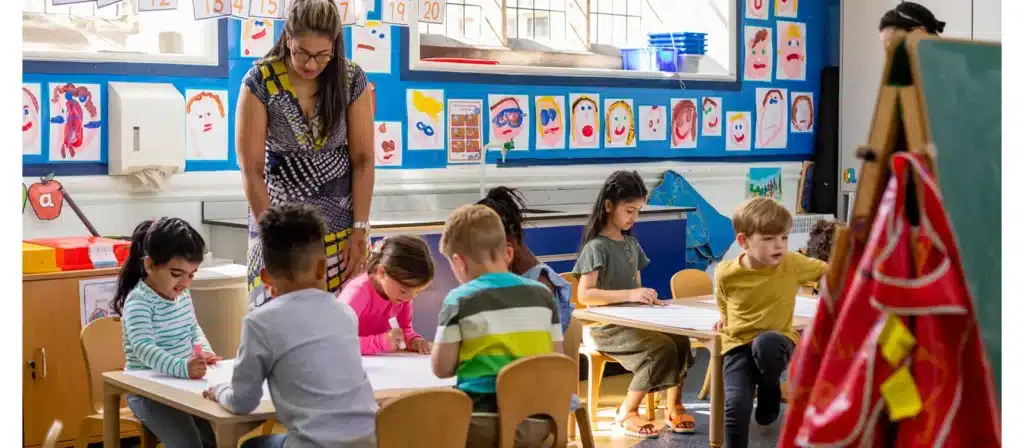
Aesthetic Design
Classrooms in Reggio Emilia schools are designed to be beautiful and inviting, with natural light, plants, and carefully chosen materials. The environment is arranged to encourage exploration, interaction, and discovery. Every element in the classroom is intentional and designed to stimulate curiosity and creativity.
Learning Centers
Different areas within the classroom are dedicated to various activities, such as art, reading, and construction. These learning centers provide children various experiences and opportunities to explore their interests. The materials in these centers are often open-ended, allowing children to use them in multiple ways.
Open Spaces
Open spaces in the classroom allow for movement and large group activities, fostering collaboration. These flexible spaces can be reconfigured to suit different activities and projects. The open layout encourages children to interact with each other and work together.
Outdoor Learning
Outdoor spaces are an integral part of the Reggio Emilia classroom environment. Children spend significant time outdoors, exploring nature and engaging in physical activities. The natural environment provides endless opportunities for discovery and learning.
Child-Accessible Materials
Materials in the Reggio Emilia classroom are within the children’s reach, encouraging independence and choice. Children can select and use materials that interest them in their projects and activities. This accessibility fosters a sense of ownership and responsibility for their learning.
How to Integrate Reggio Emilia Education Philosophy Into the Classroom?
Integrating the Reggio Emilia philosophy into a classroom requires more than just adopting a set of activities—it involves creating a mindset shift toward child-centered, inquiry-based learning. Here are several ways to incorporate this approach into your classroom practice:
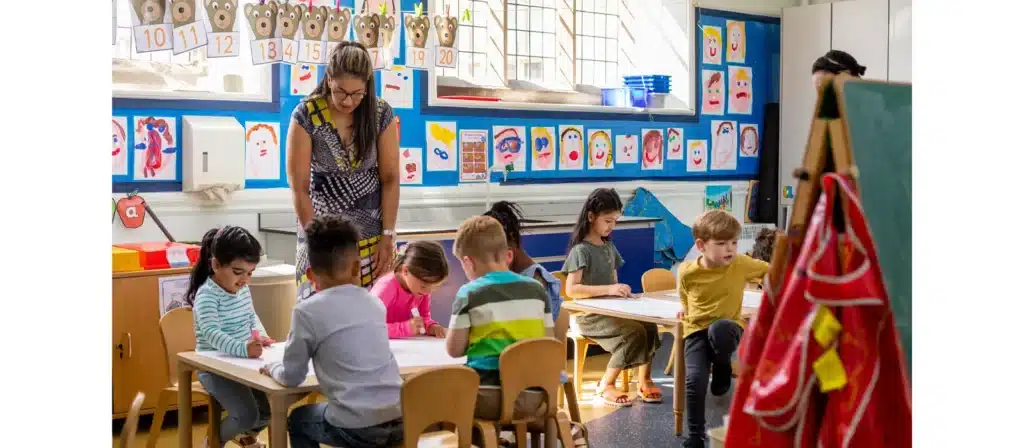
1. Design a Responsive Learning Environment
The first step in integrating Reggio Emilia into your classroom is to design an environment that encourages creativity and exploration. Start by creating spaces that are open and flexible. Use natural materials, soft lighting, and calming colors to create a warm, inviting atmosphere. Arrange classroom furniture to encourage interaction and movement and create different areas where children can work independently or in small groups. Allow for flexibility in how materials are presented to children, ensuring they can engage with them in various ways.
2. Provide Open-Ended Materials
Incorporating open-ended materials is key to fostering creativity and exploration in the classroom. Rather than using structured toys or pre-made kits, provide materials children can manipulate and use in multiple ways. For example, wooden blocks, fabric, clay, and natural objects allow children to engage in imaginative play, build, design, and explore without a predetermined outcome.
3. Play-Based Learning
Reggio Emilia’s classrooms often integrate learning into games and playful activities. This approach allows children to discover new concepts fun and engagingly. Children are motivated to learn and develop a love for discovery by weaving learning into play. Play-based learning fosters collaboration, problem-solving, and innovation, encouraging children to work together to create something new.
4. Learning Together
Reggio Emilia classrooms promote learning as a shared experience between teachers, children, and parents. Facilitate group discussions, reflections, and collaborative learning sessions in your classroom. This sense of community enhances creativity and encourages children to explore concepts deeply.
5. Encouraging Parent Participation
In Reggio Emilia, parents are seen as valuable contributors to the educational process. To integrate this philosophy, invite parents to participate in classroom activities, share cultural stories, or help with projects. Keeping parents informed and involved helps build a collaborative learning community and enhances the educational experience.
6. Appreciating Works
Children’s work is highly valued in Reggio Emilia, as it reflects their learning journey and creative expression. To incorporate this, display children’s work in the classroom, ensuring their efforts are celebrated.
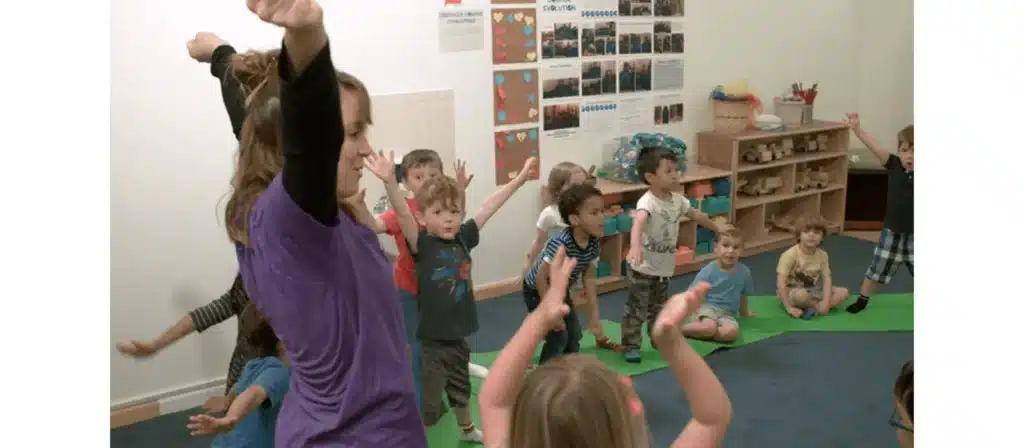
What Does a Day in a Reggio Emilia School Look Like?
A typical day in a Reggio Emilia school is dynamic and flexible, designed to meet the interests and needs of the children. The day often begins with a group meeting where children and teachers discuss the day’s plans and share their thoughts. This is followed by project work, where children engage in hands-on activities and long-term projects. Children have ample opportunities for free play, exploration, and social interaction throughout the day. Meals and snacks are also integral parts of the day, often enjoyed together to foster community.
Here’s an overview of what a typical day might look like in a Reggio-inspired setting:
- Morning Arrival and Welcome
Children are warmly welcomed by their teachers on arrival. The initial period is usually unstructured, allowing the children to settle in and choose from various activities scheduled in the classroom. - Morning Meeting
The day formally begins with a morning meeting or circle time. This gathering serves multiple purposes: discussing the day’s schedule, sharing thoughts or experiences, and introducing new ideas or projects. It is a time for children to express their thoughts and feel valued in the community. - Exploration and Project Work
Much of the morning is devoted to exploration and project work. According to the Reggio method, these projects stem from the children’s interests. Teachers facilitate activities related to these projects. - Outdoor Play
Outdoor play is essential to the day, providing children with opportunities for physical activity, social interaction, and connection with nature. Reggio schools often have thoughtfully designed outdoor spaces that act as extensions of the classroom, filled with natural materials and opportunities for imaginative play. - Lunch and Rest
Children participate in communal meals, usually followed by a rest period to allow children to relax and rejuvenate. At Reggio School, even rest periods are considered a responsive part of the curriculum, respecting each child’s need for sleep or quiet time. - Afternoon Activities
After rest, the afternoon may involve further project work or new activities that extend the learning themes of the day. This could also be a time for more focused small group activities where children can dive deeper into specific aspects of a project or explore new materials the teacher introduces. - Reflection and Documentation
Towards the end of the day, children and teachers reflect on the day’s activities. This reflection might involve discussing what they learned, what they found challenging, and what they might be curious to explore next. Teachers often use this time to document children’s progress and experiences, which informs future planning. - Departure
As the day closes, children prepare to go home. Teachers and children briefly discuss the next day’s activities, building anticipation and continuity between school days. Departure is as warm and personal as arrival, with teachers ensuring that children leave feeling fulfilled and acknowledged.
In Reggio Emilia schools, every day is an adventure. Children start with group meetings to discuss plans, then engage in projects, free play, and exploration, all tailored to their interests. This approach ensures that learning is meaningful and engaging.
How Are Reggio Emilia Classrooms Divided and Furnished?
Reggio Emilia classrooms are meticulously designed to promote active learning, creativity, and independence. Every element in the classroom—its division, furniture, and materials—is carefully considered to support the Reggio Emilia philosophy of child-centered education. Below, we’ll explore how Reggio Emilia classrooms are divided and furnished, broken down into clear steps.
Step 1: Planning the Physical Layout
The first step in designing a Reggio Emilia classroom is planning the physical layout to create a dynamic environment that encourages exploration and interaction. The classroom is viewed as the “third teacher,” with its layout directly influencing how children engage with the space and one another. The layout is carefully designed to provide distinct areas for various activities, such as quiet spaces, creative areas, and collaborative zones.
- Open Space: An open, flexible area for group activities, discussions, and movement is crucial. It allows children to move freely between learning stations and interact with peers.
- Defined Learning Areas: Specific areas are designated for particular activities like reading, drawing, building, or science exploration. These spaces help focus children’s attention while allowing for independent exploration.
Step 2: Dividing the Classroom into Learning Zones
In Reggio Emilia classrooms, space is divided into several well-thought-out zones or “areas” that support different types of learning. Each zone serves a unique purpose, providing the tools and materials needed for children to engage in specific activities.
- Art Area: This is a space filled with materials like clay, paints, drawing tools, and fabric where children can express themselves creatively. This area encourages hands-on learning and artistic exploration.
- Science and Discovery Area: This zone is typically filled with natural objects like leaves, rocks, and shells, alongside scientific tools such as magnifying glasses or simple machines. Children are encouraged to investigate the natural world here.
- Reading and Quiet Space: A calm, inviting corner with bookshelves, cushions, and a selection of books. This space allows children to read independently or with a peer, fostering a love for reading and language.
- Building Area: This area contains building blocks, construction materials, and other open-ended resources to encourage spatial awareness, problem-solving, and collaborative play.
- Role Play Zone: A designated space for dramatic play where children can take on roles and engage in imaginative play, which fosters social and emotional development.
Step 3: Selecting Furniture
The furniture in a Reggio Emilia classroom is deliberately chosen to be low to the ground, child-sized, and flexible, allowing for freedom of movement and independence. Furniture supports children’s autonomy and encourages engagement in various learning activities.
- Low Tables and Chairs: Children are given the freedom to work independently at tables and desks that are at their level, fostering a sense of ownership over their work.
- Shelves and Storage: Open shelves are used to display materials and resources, making them accessible to children at all times. This encourages independence and allows children to make choices about their learning.
- Flexible Seating: Soft seating options like cushions or rugs are used in reading areas, while stools and small chairs are placed throughout the classroom to allow for flexible groupings and collaboration.
- Natural Materials: Wooden furniture and natural elements like plants or stones are incorporated into the classroom to create a calming, organic atmosphere that mirrors the natural world.
Step 4: Choosing Materials and Resources
Materials in Reggio Emilia classrooms are carefully selected to be open-ended, meaning that they can be used in multiple ways and spark creativity. The goal is to provide materials that allow for exploration, experimentation, and discovery.
- Natural Materials: Wood, stones, clay, and other natural items are often used in the classroom. These materials are tactile, open-ended, and often provoke curiosity and engagement.
- Art Supplies: A variety of art materials, such as paints, markers, fabrics, and paper, are made available to encourage children’s creativity. Art tools are often presented in a way that is visually appealing and organized to help children explore different forms of expression.
- Building Materials: Blocks, construction kits, and other building materials allow children to create structures, learn about geometry, and practice problem-solving.
- Loose Parts: Items like buttons, fabric scraps, pebbles, or beads—materials that can be combined, manipulated, and reconfigured—are provided for open-ended play and creation.
Step 5: Incorporating Natural Light and Open Spaces
In Reggio Emilia classrooms, the use of natural light is prioritized. Classrooms are designed with large windows to maximize the amount of daylight, creating a bright, airy environment. Natural light has been shown to improve mood, energy levels, and focus, which is why it plays such an important role in the design of these classrooms.
- Windows and Light Fixtures: Large windows allow children to connect with the outside world, observing the natural surroundings. Skylights and well-placed light fixtures are also used to ensure that every corner of the classroom is illuminated with warm, natural light.
- Open Layout: The open space design encourages interaction and movement. Rather than being compartmentalized with walls, the classroom is often arranged to provide clear sightlines, ensuring that children can move freely and interact with each other and the environment.
What Does It Take to Be a Reggio Emilia Teacher?
Becoming a Reggio Emilia teacher requires a deep understanding of the approach’s principles and a commitment to continuous learning and reflection. Teachers must be skilled observers who document children’s learning processes and use this information to guide future activities. They should be flexible, creative, and open to collaboration with colleagues, children, and parents. Training programs for Reggio Emilia educators emphasize the importance of understanding child development, creating supportive environments, and fostering strong relationships within the learning community.
Reggio Emilia’s teachers are skilled observers and collaborators. They document learning processes, adapt to children’s interests, and engage with parents and colleagues to create a supportive and dynamic educational environment.
Comparison of the Reggio Emilia Approach to Montessori
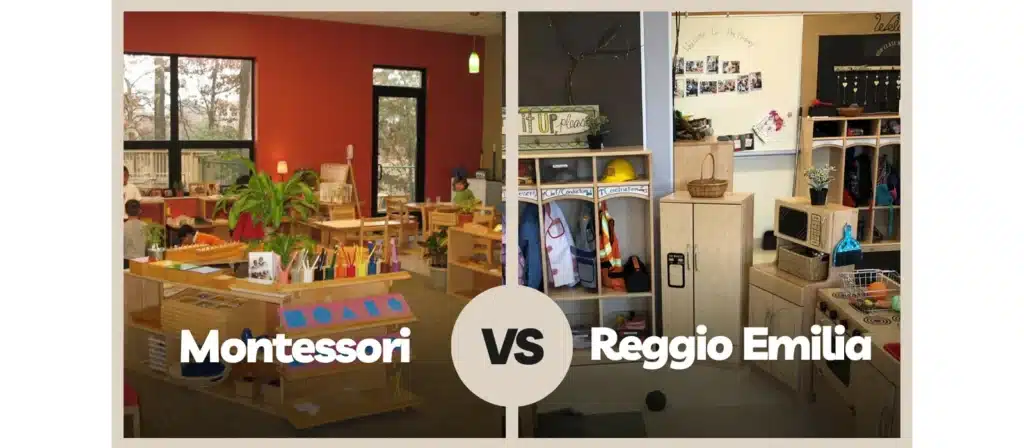
Curious about the specific differences and similarities between Reggio and Montessori educational philosophies?
The Reggio Emilia and Montessori approach share a focus on child-centered learning but differ in their methods and philosophies. The Reggio Emilia approach emphasizes collaborative learning, project-based activities, and the role of the environment as a teacher. In contrast, the Montessori method focuses on individualized learning, with a structured environment and specific materials designed to promote independence. Both approaches value observing children and following their interests, but they implement these principles differently.
| Aspect | Reggio Emilia | Montessori |
|---|---|---|
| Educational Philosophy | Emphasizes creativity, collaboration, and exploration through hands-on activities. | Focuses on individualized learning and independence, with structured activities. |
| Role of the Teacher | Teachers are seen as co-learners and facilitators, guiding the child’s discovery process. | Teachers act as guides, offering specific materials and activities for children to engage with. |
| Classroom Environment | Flexible, open-ended spaces designed to inspire creativity and collaboration. | Highly organized, structured spaces with clearly defined areas for different activities. |
| Materials Used | Natural, open-ended materials encourage creativity and exploration. | The curriculum, with pre-designed materials, is based on the child’s developmental stages. |
| Parental Involvement | Strong emphasis on collaboration with parents as partners in the child’s learning journey. | The curriculum is based on the child’s developmental stages, with pre-designed materials. |
| Curriculum Structure | Parental involvement is encouraged but less integrated into daily classroom activities. | Structured materials are designed to teach specific skills and concepts. |
The Reggio Emilia approach emphasizes collaboration and projects, while Montessori focuses on individual learning and independence. Both prioritize observing children and following their interests but differ in their methods and materials.
Reggio Emilia Creative Activity Ideas
The Reggio Emilia approach encourages creativity through activities promoting exploration and expression. Here are some creative activity ideas inspired by the Reggio Emilia philosophy that you can integrate into the classroom or at home to foster creativity and exploration:
1. Nature Art
While walking outside, collect natural materials like leaves, flowers, twigs, and stones. Children can use these items in the classroom or home to create art. They can arrange the materials on paper or canvas to form patterns or pictures and then glue them to create permanent artwork.
2. Light and Shadow Play
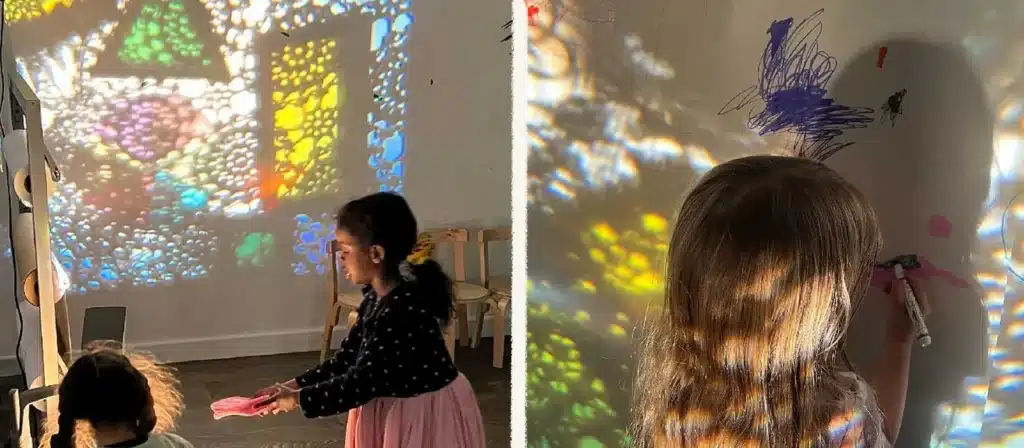
Set up a light table or a projector and provide transparent, translucent, and opaque objects for children to play with. Children can explore how light passes through objects, creating different shadows and colors.
3. Clay Sculpting
Provide children with clay or playdough along with various sculpting tools and materials that can be used to add texture or details (e.g., sticks, beads, straws).
4. Recycled Material Construction
Collect various recycled materials such as cardboard boxes, plastic containers, fabric scraps, and bottle caps. Challenge children to build something using these materials—perhaps a model of their home, a fantasy castle, or a vehicle.
5. Sound Experiments
Create a “sound garden” with objects that produce different sounds, like bells, drums, water in different-sized containers, and metal utensils. Children can experiment with creating music or sound patterns, exploring the concepts of rhythm, volume, and tone.
6. Interactive Storytelling
Encourage children to create a story together. Start with a story prompt and ask a child to add the next part of the story. Continue around the group until everyone has contributed.
7. Sensory Walks
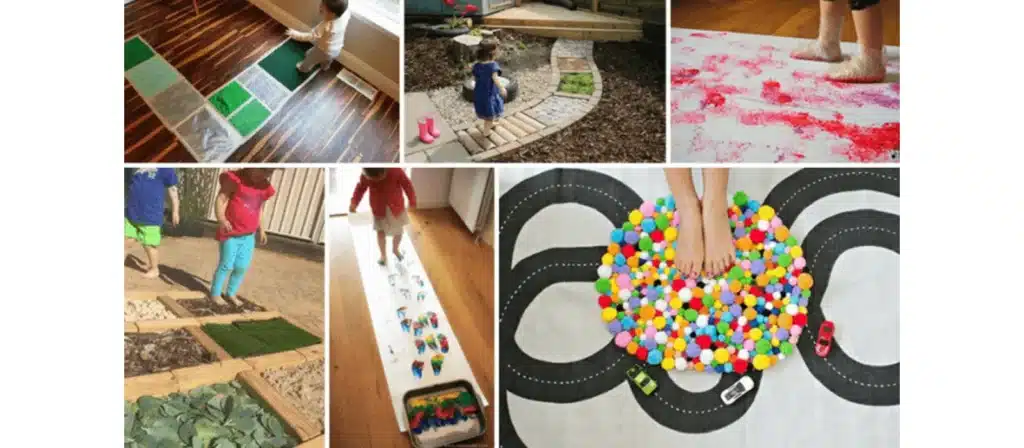
Take children on a walk around the neighborhood or schoolyard to use all five senses. They can listen to different sounds, observe changes in the landscape, touch various textures, smell flowers or soil, and taste safe edible plants. Documenting these experiences through photos, drawings, or written descriptions can extend the learning.
8. Color Mixing Lab
Set up a color mixing station with primary color paints, watercolors, or colored water in clear bottles. Provide tools like droppers, spoons, or small containers for mixing. Children can experiment with mixing colors to see what new colors they can create, documenting their recipes.
9. Sensory Play
Set up sensory play stations with sand, water, clay, and sensory bins filled with different textures. Sensory play helps children explore their senses, develop fine motor skills, and learn through hands-on experiences.
10. Music and Movement
Incorporate music and movement into the daily routine. Provide musical instruments, play different genres of music, and encourage children to dance, sing, and explore rhythms. This activity supports physical development and fosters a love for music.
Conclusion
The Reggio Emilia approach to early childhood education offers a rich and dynamic framework that prioritizes child-led learning, creativity, and collaboration. Fostering a supportive and engaging environment nurtures children’s innate curiosity and helps them develop essential skills for lifelong learning.
If you want to learn more about the Reggio Emilia Method and how to implement it in your educational setting, you can contact Xiha Montessori.








